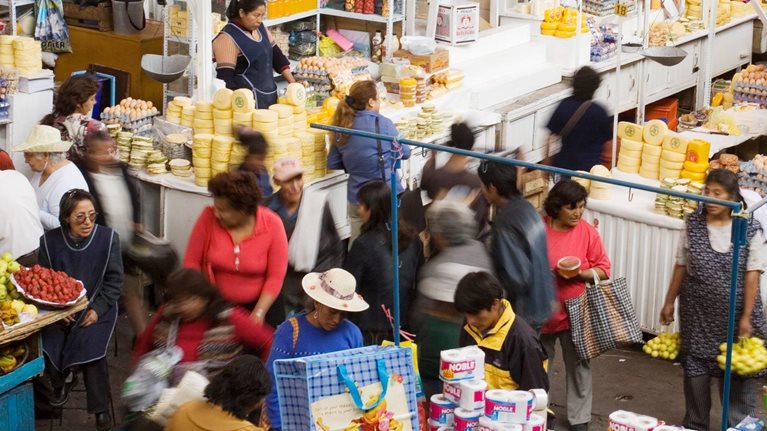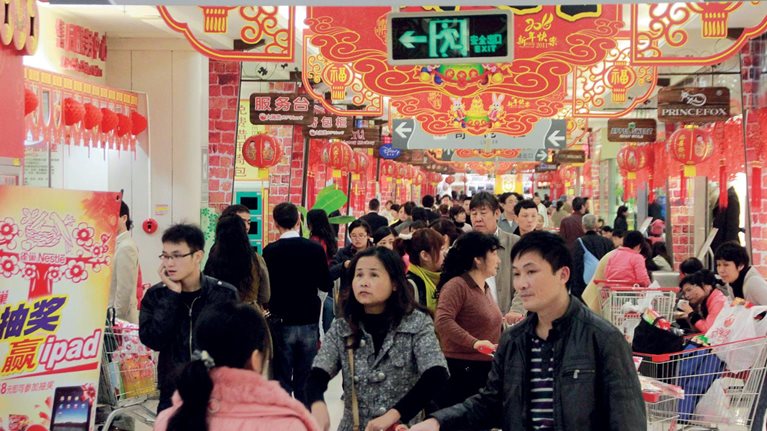Some 90 million Indonesians will join the consumer class by 2030—more than in any emerging nation save China and India. For consumer companies, that will mean an additional $1 trillion in annual spending by the nation’s optimistic and increasingly sophisticated consumers.1
Already, Indonesia’s consumer spending, at 61 percent of GDP (2010), is closer to levels in developed economies than to the corresponding figures for neighboring, largely export-driven nations such as Malaysia and Thailand. As the percentage of the country’s population living in urban areas grows from roughly 53 percent of Indonesia’s residents today to 71 percent in 2030, spending should grow in categories such as financial services, leisure, travel, and apparel (Exhibit 1). It already has among today’s upwardly mobile, tech-savvy, individualistic city dwellers.
Between now and 2030, a wide range of Indonesian consumer markets should experience rapid growth.

Yet Indonesia’s consumer market is complex, scattered over 17,500 islands where tastes and preferences vary. To help companies navigate, we surveyed 5,500 consumers in 44 cities across hundreds of categories and brands.2
Brand preferences
Indonesians attach more importance to brands than do the consumers of any nation we’ve seen at this stage of development, including China.3 Sixty percent prefer local brands, which are particularly strong across food and beverage categories. But consumers aren’t strongly aware of brand ownership—many consider Nestlé’s Kit Kat brand, for example, to be local—so multinationals aren’t at a disadvantage, provided they can develop a brand position that resonates with local buyers. The country’s Honda motorcycle subsidiary, for instance, used the Bahasa Indonesian words satu hati, or “one heart,” in a successful local advertising campaign.
Urban dynamics
The two biggest cities on the island of Java—Jakarta and Surabaya—are hubs for clusters of fast-growing “middleweight” cities, and six clusters of rapidly growing smaller cities are developing across the archipelago. Understanding their dynamics and differences is crucial. We found that the behavior of buyers in Surabaya, for example, tends to be influenced more by brand and image than that of consumers in Jakarta. Surabaya’s consumers favor global categories (such as chocolate) more strongly, and they are two times more likely to seek advice from family and friends before buying. We also found that many product groups have achieved substantial levels of household penetration nationally but that regions vary in meaningful ways (Exhibit 2). Successful companies will increasingly need to localize products and value propositions while crafting portfolios of local and global brands. That may sometimes require partnerships with local players.
Product penetration varies dramatically across products and regions.

Getting to market
Indonesia’s distribution infrastructure is fragmented geographically, and mom-and-pop stores predominate in many consumer categories. Channels are evolving, however, and modern retailing has made rapid inroads. For home and beauty products, we found that shoppers at all levels are more likely to buy at chain stores in malls. For mobile phones, channel loyalty is becoming no less important than brand loyalty as customers start to be comfortable with mall offerings and services. Here again, the evolution isn’t uniform across cities; modern retailing, for example, is more common in Jakarta’s city cluster than in Surabaya’s. For now, companies will need to navigate each of these systems. One large consumer-goods company maximizes its footprint by selling across both channels and educates mom-and-pop proprietors with programs in areas such as cash management.
Going digital
Digital technology will play a greater role in reaching Indonesia’s diverse and dispersed consumers. Today, product information flows primarily from TV advertising and personal recommendations. Many fewer consumers use the Web for pre-purchase decisions—5 percent in Indonesia versus 28 percent in China. However, Internet access is rising at an annual rate of 20 percent, and 100 million Indonesians will be connected to it by 2016. Already, 60 percent of Indonesian adults own a mobile phone, Facebook usage is strong, higher-income Indonesians are flocking to the Web before buying autos, Web-based shopping forums are proliferating, and e-commerce is taking hold. One major commercial bank reports a 300 percent increase in online transactions over the past year.
By embracing the nation’s complexity and diversity, global companies can position themselves ahead of Indonesia’s rising consumer wave.


